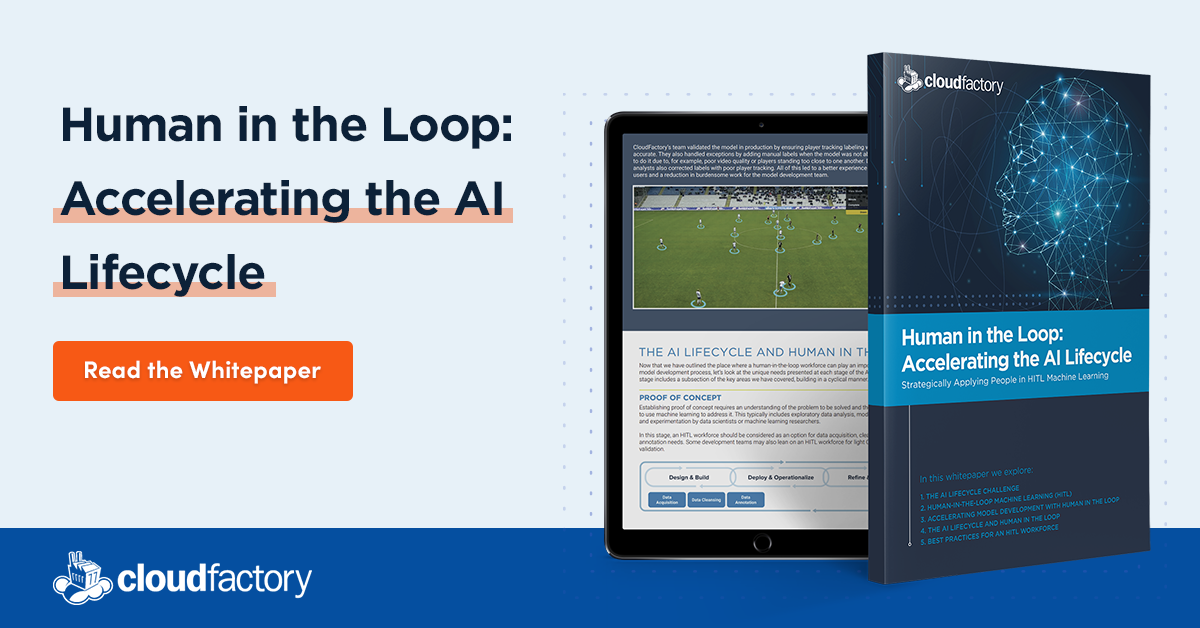
Artificial intelligence (AI) is teaching humans new tricks. When engineers at the rideshare company Lyft created an algorithm designed to match driver supply and customer demand to maximize revenue, the algorithm showed them a better way. The AI system identified a more effective algorithm by optimizing the conversion rate of users who ordered a ride after opening the app.
This algorithm improvement influenced multiple business areas, from operations to marketing. In this example, Lyft combined the business expertise of people with AI’s computational power to improve a key strategic metric. The company credits the humans in the loop for considering and testing possible objectives for the system’s machine learning algorithms.
Similar to the humans in the loop who design, build, and test possible objectives for algorithms, the people who prepare and conduct quality control on your labeled data for machine learning are critical to the success of your AI project.
Here are three ways these humans in the loop add value across the AI lifecycle, from training to model in production:
1. Optimize model performance
Data is the fuel that drives every aspect of the model development process and the AI lifecycle. To start, people must gather, clean, enrich, and label the data. Next, people fine-tune the model to teach it to recognize edge cases and mitigate inaccuracies in outputs. One of the most common methods is to score predictions to account for these discrepancies.
Once enough data has been collected, labeled, and consumed by the model, with outputs that achieve a reasonable degree of accuracy, human expertise must be applied to maintain that model in production. Ground truth can change over time, so initial training data isn’t enough to build and sustain a useful model. Here, we see how human expertise continues to add value throughout the AI lifecycle.
2. Improve cost-efficiency
The amount of data required to build and maintain high-performance AI systems can create a cost burden. For some computer vision use cases, such as self-driving vehicles, the amount of data required is truly enormous – billions of miles of driving data.
The challenge of preparing data for machine learning at this scale is when auto-labeling and active learning can be especially helpful. If an algorithm has low confidence in a prediction, automation can flag it for a person’s review. Strategic deployment of automation and the humans in the loop can accelerate training on new data.
3. Evolve your process
If one thing is certain in AI development, it’s change. You will evolve your data features, process, and even the technology you use to prepare your data for machine learning. Your humans in the loop must have the agility to change seamlessly as you review outcomes and fine-tune your models.
One of the best ways to derive value from a human-in-the-loop approach is to tap into a workforce that has the agility to evolve their process as your AI project team iterates everything from people to process to technology. Indeed, across the model development process, the humans in the loop will shift from data cleaning, enrichment, and labeling to quality control, automation monitoring, and exception handling. All of these use cases rely on people to ensure high-performance machine learning models.
CloudFactory and the human in the loop
Scaling your human-in-the-loop process is perhaps the biggest challenge in the model across the AI lifecycle. For most organizations, it is not economically viable to continuously recruit, train, and manage staff to support it, especially when your data needs are likely to change over time.
At CloudFactory, we know about data and machine learning. For the last decade, we’ve provided professionally managed teams of data analysts who become an extension of the AI development teams they serve.
To learn more about how people can be applied strategically during the model development process and across the AI lifecycle, read the whitepaper below or watch our session from Cognilytica’s Data for AI Conference.
Outsourcing Workforce Strategy ML Models AI & Machine Learning








